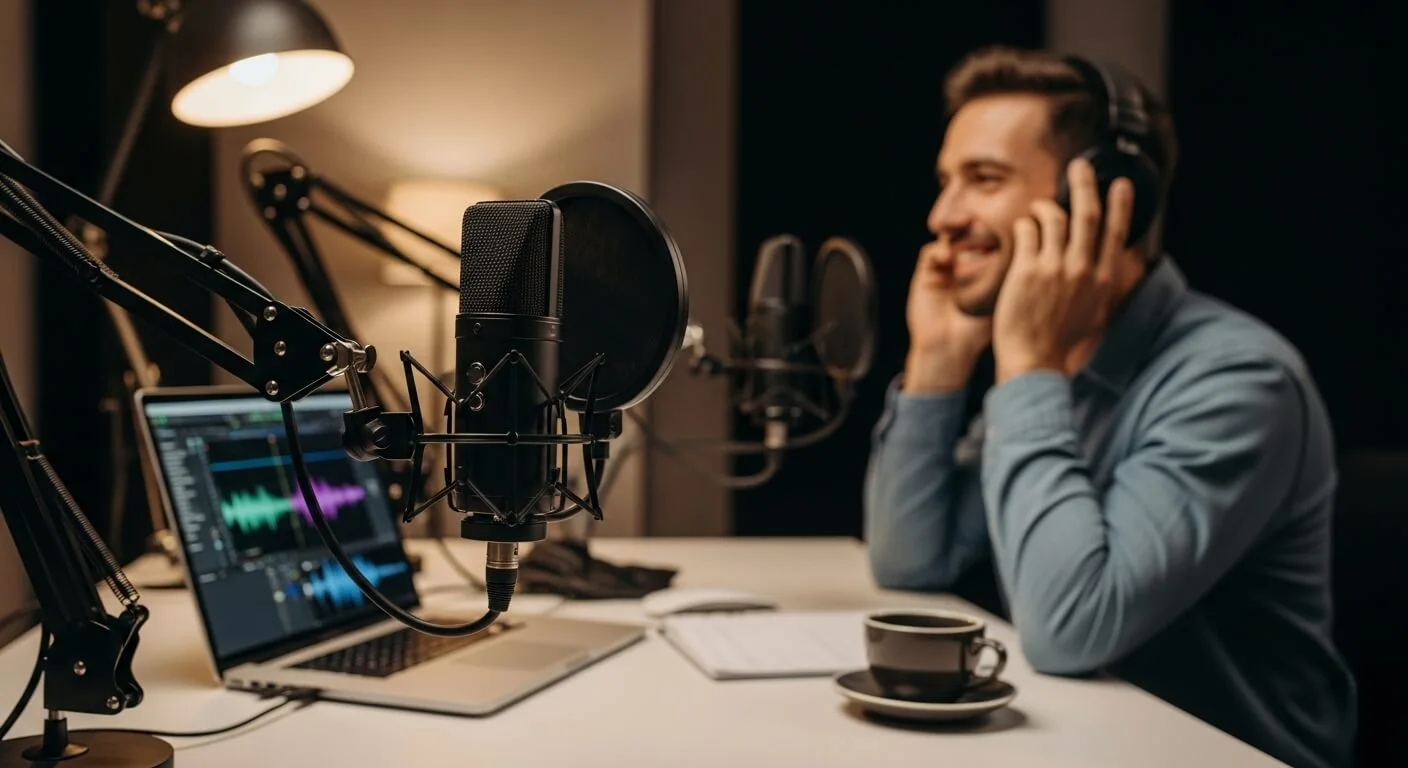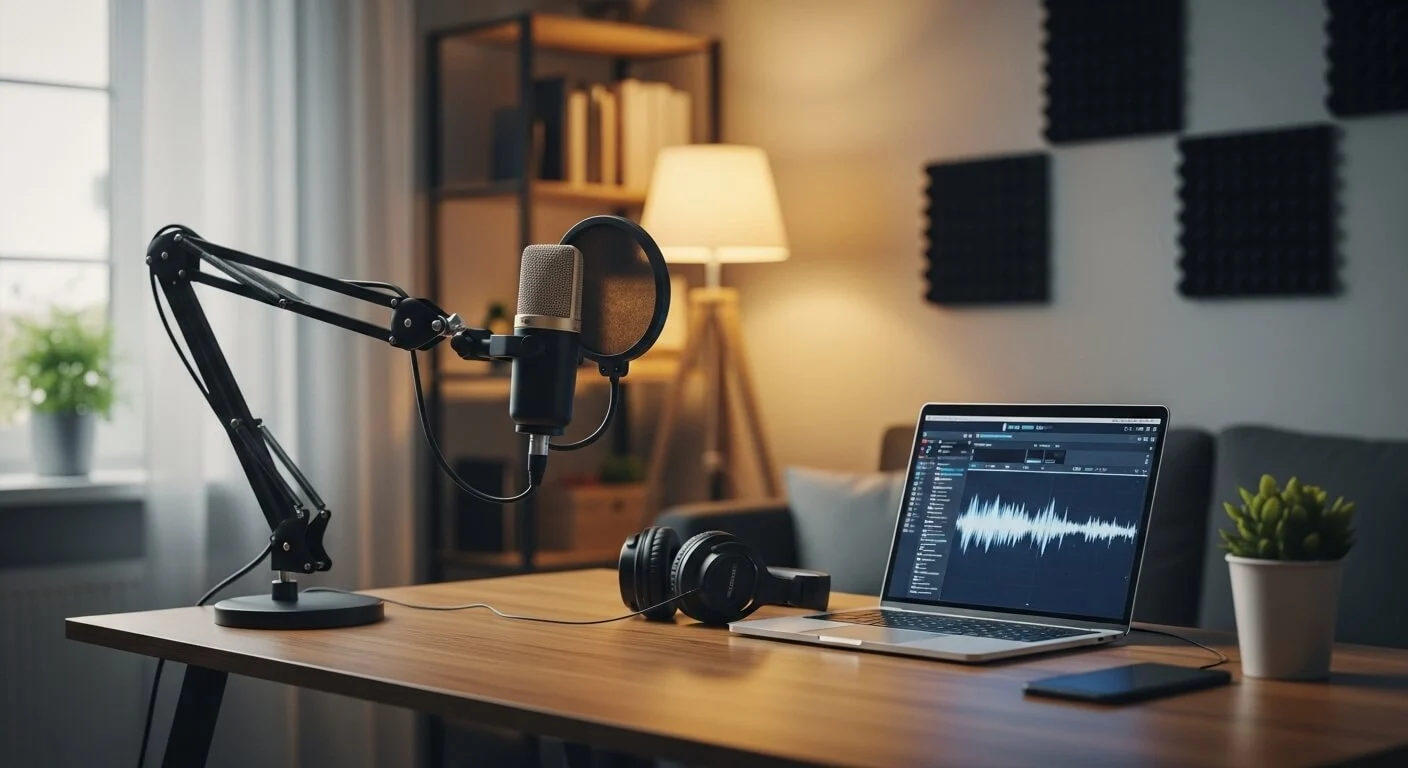Tangled cables, restricted movement, and muffled audio—these are the enemies of a great podcast. In a world where content is king, audio quality is the crown. The freedom to move, gesture, and record from anywhere without being tethered to your desk is a game-changer. That’s why finding the best wireless microphone for podcasting can dramatically elevate your production value, making your show sound more professional and engaging for your listeners.
Table of Contents
ToggleBest Wireless Microphone for Podcasting
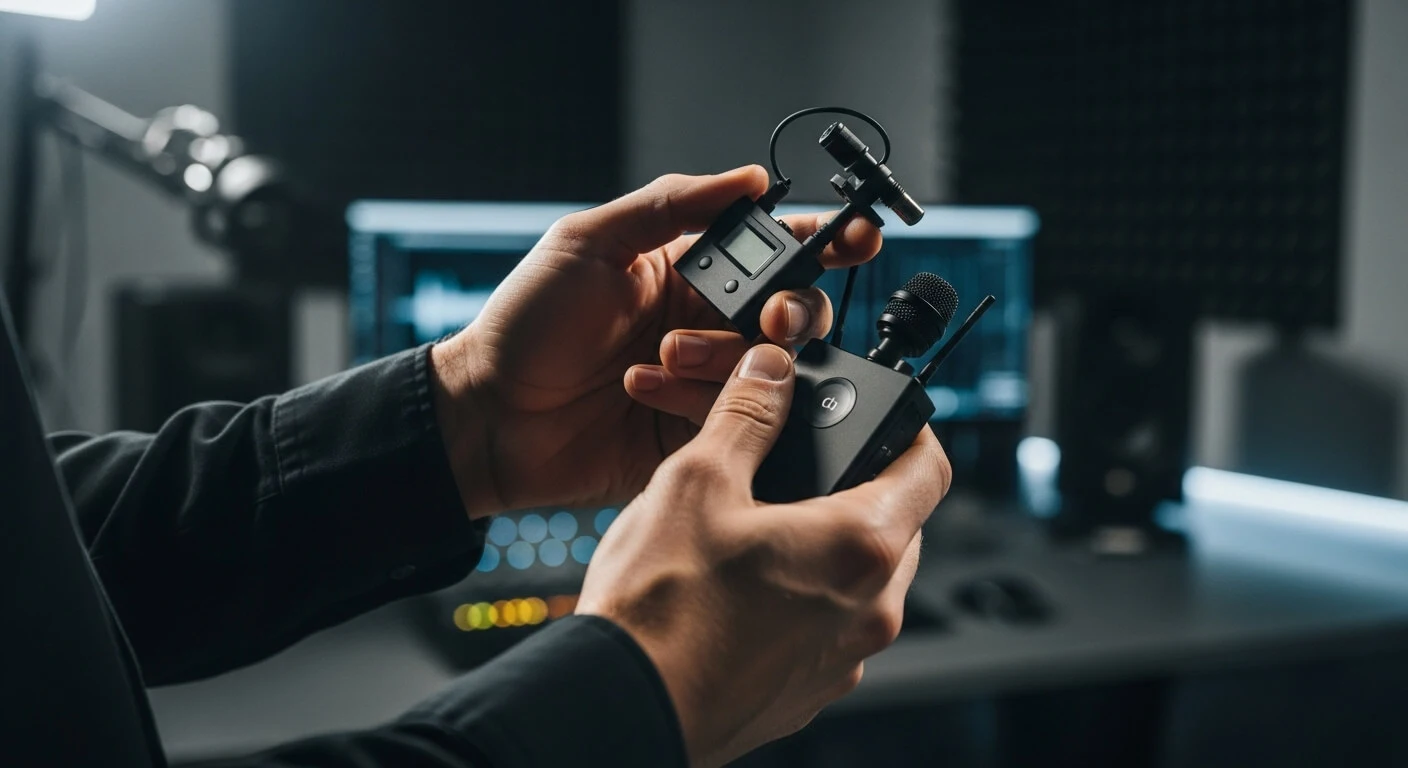
But with countless options on Amazon, how do you choose the right one? It can be overwhelming. That’s why we’ve done the heavy lifting for you. Based on extensive research into Amazon’s best-sellers, analyzing thousands of verified customer reviews, and comparing key specifications, we’ve identified the top performers. This article reviews the top 3 wireless microphones that consistently earn 4-star ratings or higher, helping you make an informed purchase and invest in audio that truly shines.
Rode Wireless GO II: The Industry Standard for a Reason
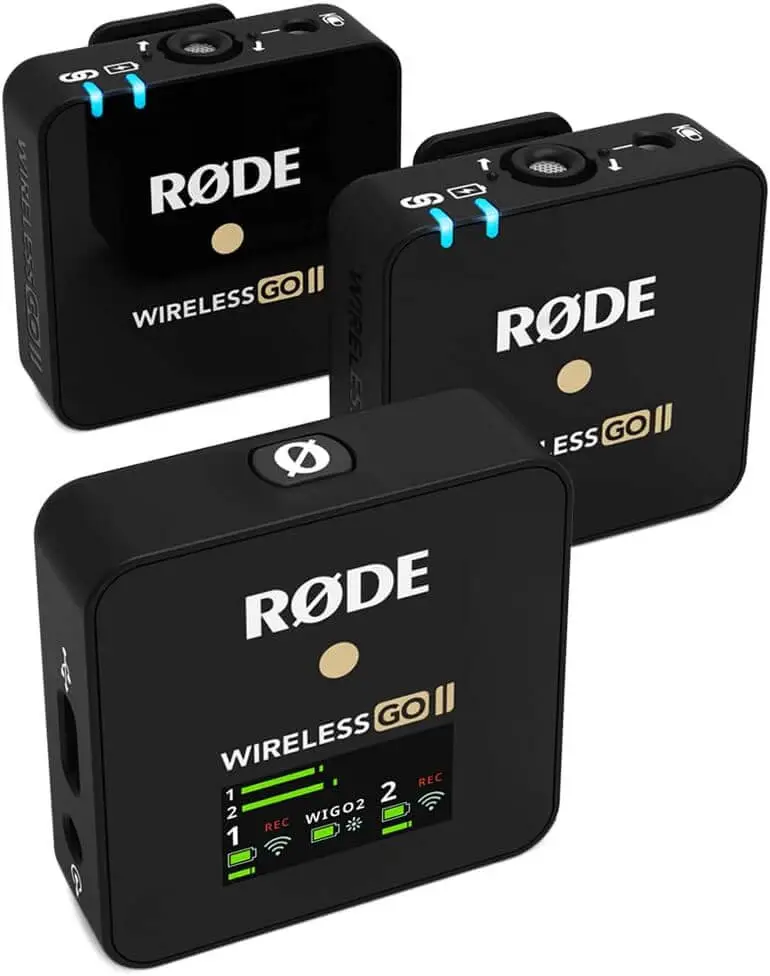
Product Link: Rode Wireless GO II on Amazon
The Rode Wireless GO II is not just a product; it’s a phenomenon in the content creation world. It has become the go-to system for podcasters, YouTubers, and filmmakers who demand reliability, flexibility, and superb audio quality in a compact package.
- Star Rating: 4.7 out of 5 stars
- Reviews: 10,000+
- System Type: Dual-Channel 2.4GHz Digital Wireless System
- Transmission Range: 200m (656 ft) line-of-sight
- Onboard Recording: Over 40 hours of internal memory for backup recordings
- Outputs: 3.5mm TRS analog, USB-C digital audio
- Battery Life: Up to 7 hours
- Compatibility: Universal (Cameras, Mobile Devices, Computers)
What Customers Are Saying:
Reviewers consistently praise the Rode Wireless GO II for its pristine audio clarity and incredible versatility. One verified purchaser calls it “an absolute lifesaver,” highlighting the onboard recording feature that saved an entire interview when their camera’s audio failed. Another user, a professional podcaster, notes that the ability to record each channel separately (in split mode) provides immense flexibility in post-production, allowing them to balance levels perfectly.
4 Best Budget Microphones for Podcasting : Pro Sound on a Shoestring
A common theme is the system’s reliability. Users trust its stable connection even in crowded wireless environments. While some beginners mention a slight learning curve to access advanced features through the Rode Central app, they agree the out-of-the-box performance is exceptional.
Pros:
- Dual-Channel Versatility: Perfect for two-person podcasts or interviews.
- Onboard Safety Recording: A critical backup feature that prevents audio loss.
- Crystal-Clear Audio: Delivers broadcast-grade sound quality.
- Exceptional Range: Reliable 200m range offers incredible freedom.
- Universal Compatibility: Works seamlessly with nearly any recording device.
Cons:
- App-Dependent Features: Some advanced settings require the companion app.
- No Charging Case Included: The case must be purchased separately.
Personal Insight:
As someone who often conducts dynamic interviews, the dual-channel capability is non-negotiable. The Rode Wireless GO II’s ability to capture two separate audio sources flawlessly is its biggest strength. The onboard recording isn’t just a feature—it’s peace of mind. For any serious podcaster, this system is a rock-solid investment that will grow with you.
See why thousands trust the Rode Wireless GO II check it out on Amazon today!
DJI Mic: The All-in-One Powerhouse
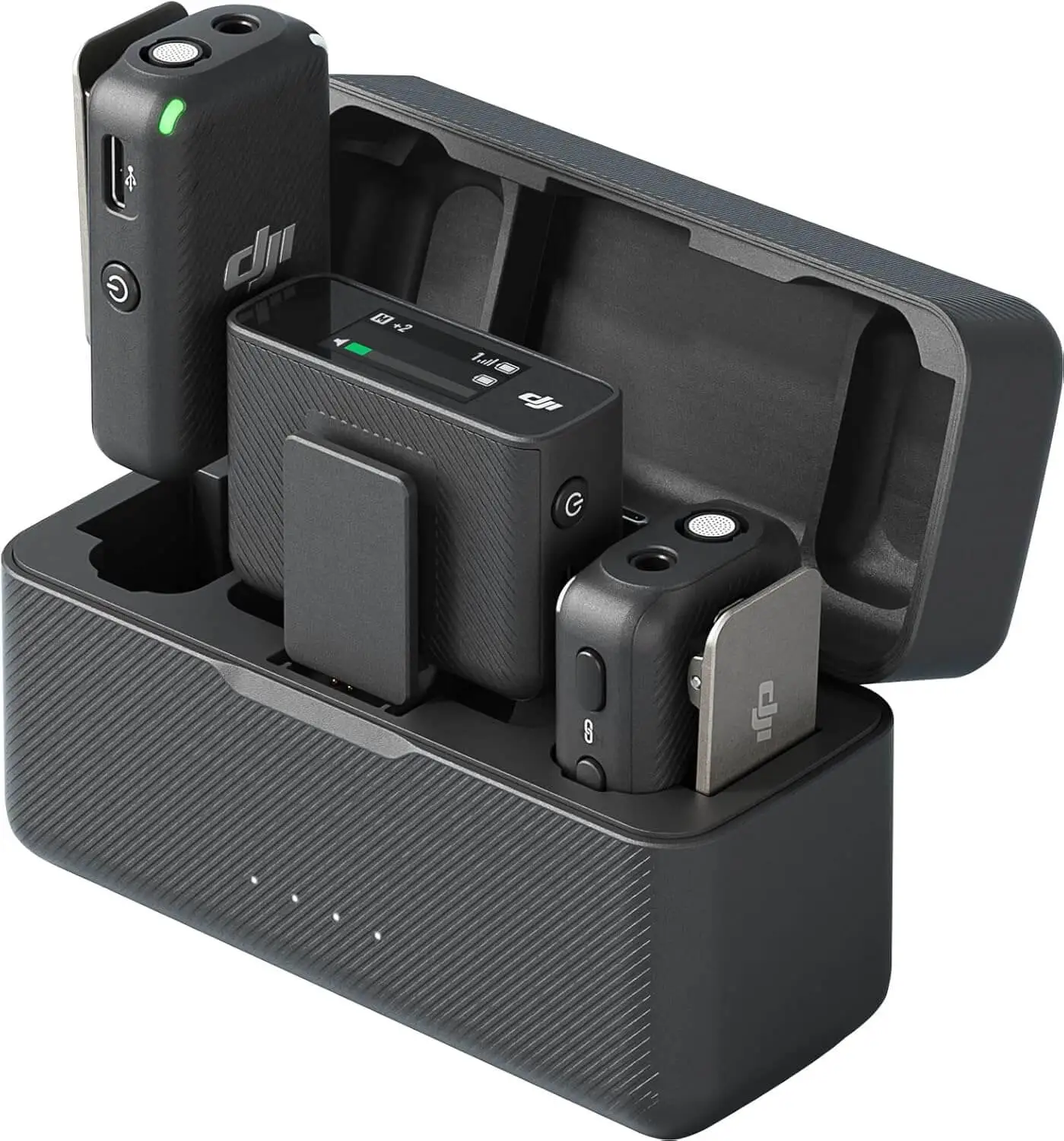
Product Link: DJI Mic on Amazon
DJI, renowned for its drones and camera gimbals, has brought its signature design and user-centric innovation to the audio world with the DJI Mic. This system is designed for the modern, on-the-go creator who values convenience as much as quality.
- Star Rating: 4.7 out of 5 stars
- Reviews: 6,000+
- System Type: Dual-Channel 2.4GHz Digital Wireless System
- Transmission Range: 250m (820 ft) line-of-sight
- Onboard Recording: 14 hours of internal memory on each transmitter
- Key Feature: All-in-one charging case
- Receiver: OLED touchscreen for easy control
- Battery Life: 5.5 hours (transmitters), 5 hours (receiver), up to 15 hours with charging case
What Customers Are Saying:
The standout feature praised in nearly every review is the charging case. A verified customer described it as “an absolute game-changer,” as it keeps all components charged, paired, and ready to record at a moment’s notice. The plug-and-play simplicity is another major selling point, with many users noting they were up and running in seconds. The OLED touchscreen on the receiver is frequently mentioned as an intuitive way to monitor levels and change settings without needing a smartphone app.
Reviewers love the audio quality, often comparing it favorably to the Rode. While it’s a premium-priced product, most feel the convenience and all-inclusive design of this portable wireless mic for on-the-go recording justify the cost.
Pros:
- Ultimate Convenience: The charging case simplifies storage, pairing, and charging.
- Intuitive Touchscreen: Easily monitor and control audio directly from the receiver.
- Excellent Range: A class-leading 250m transmission distance.
- Sleek, Compact Design: Highly portable and professional-looking.
- Impressive Onboard Memory: 14 hours of backup recording is more than enough for any session.
Cons:
- Premium Price Point: One of the more expensive options in its class.
- Slightly Bulkier Transmitters: The transmitters are a bit larger than some competitors.
Personal Insight:
If your podcasting workflow involves a lot of travel, field interviews, or quick setups, the DJI Mic is built for you. The mental energy saved by simply opening a case and knowing everything is charged and paired cannot be overstated. It removes technical friction, letting you focus entirely on your content. This is the system for creators who prioritize a seamless, efficient workflow above all else.
Experience the future of wireless audio shop the DJI Mic on Amazon now!
Hollyland Lark M1: Best Budget-Friendly Option for Crystal Clear Audio
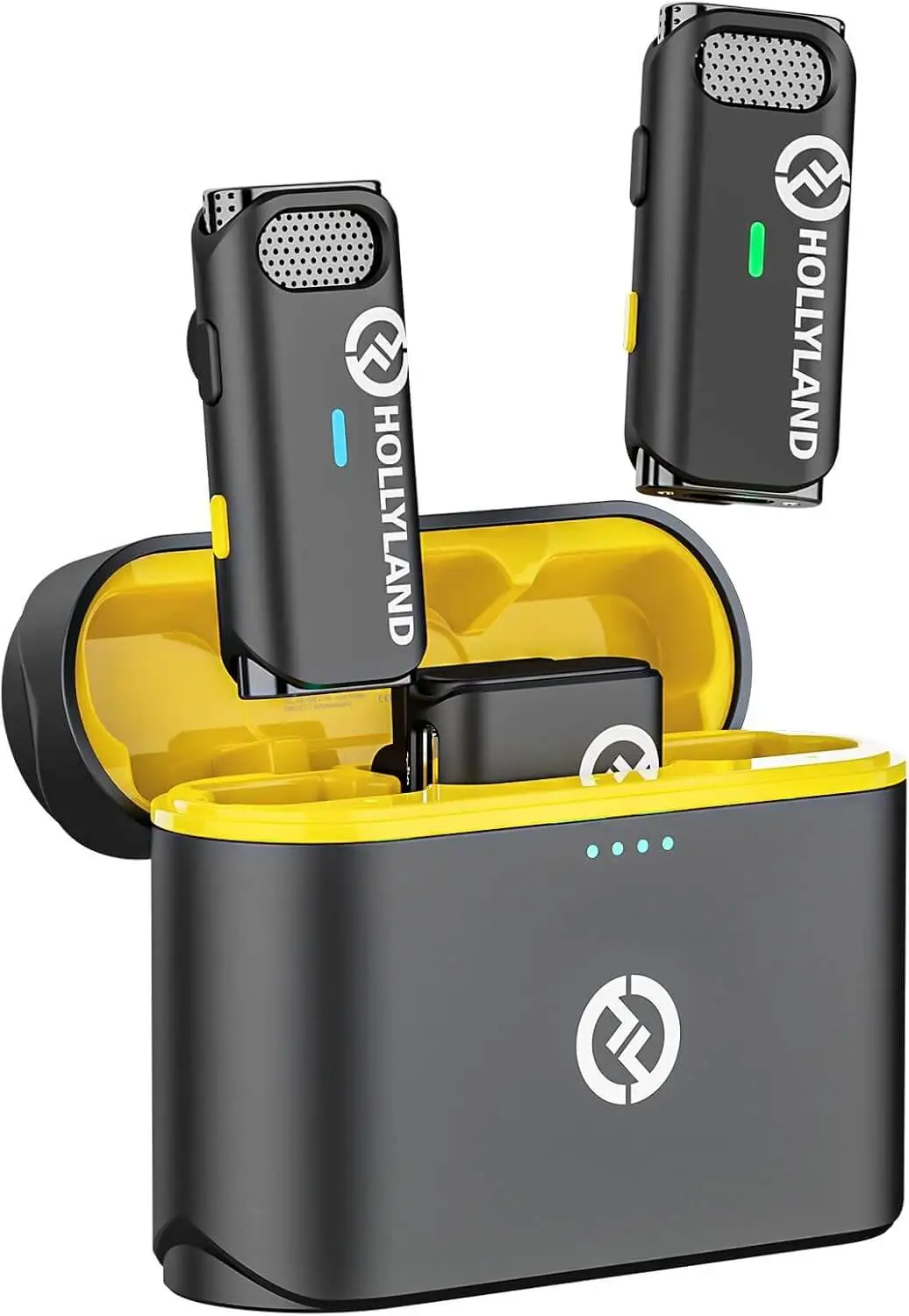
Product Link: Hollyland Lark M1 on Amazon
Proving that great audio doesn’t have to break the bank, the Hollyland Lark M1 delivers impressive performance at an incredibly accessible price point. It’s the perfect choice for aspiring podcasters, vloggers, and content creators looking for a reliable dual-channel system without a premium investment.
- Star Rating: 4.5 out of 5 stars
- Reviews: 2,000+
- System Type: Dual-Channel 2.4GHz Digital Wireless System
- Key Feature: HearClear Smart Noise Cancellation
- Transmission Range: 200m (656 ft) line-of-sight
- Battery Life: Up to 8 hours
- Weight: 11.8g per transmitter (ultra-lightweight)
- Setup: 3-second auto-pairing
What Customers Are Saying:
The overwhelming sentiment from customers is “unbeatable value.” Many reviewers are shocked by the audio quality and feature set at this price. The one-click HearClear noise cancellation is a frequently praised feature, with users confirming it effectively reduces ambient noise like wind or air conditioning without making voices sound artificial. One user, who uses it for both YouTube and podcasting, called it the perfect budget wireless microphone for YouTube and podcasting.
Its lightweight design and ease of use make it a favorite for beginners. While it lacks the onboard recording of its pricier rivals, customers agree that for live-streaming or recording directly to a camera or phone, it’s a stellar performer.
Pros:
- Excellent Value for Money: Professional features at a fraction of the cost.
- Effective Noise Cancellation: The HearClear feature works surprisingly well.
- Extremely Lightweight: Transmitters are feather-light and discreet.
- Simple and User-Friendly: Ideal for those who want a plug-and-play solution.
- Great Battery Life: 8 hours of recording time is ample for most projects.
Cons:
- No Onboard Recording: Lacks a backup recording function.
- Build Quality: The plastic build feels less premium than Rode or DJI.
Personal Insight:
For podcasters just starting out or content creators on a tight budget, the Hollyland Lark M1 is a fantastic entry point into the world of wireless audio. It delivers on the most important promise: clear, reliable sound. The noise cancellation is a standout feature that adds value far beyond its price tag, making it perfect for recording in less-than-ideal environments. It’s proof that you can achieve professional sound without a professional budget.
Upgrade your audio without breaking the bank find the Hollyland Lark M1 on Amazon!
Comparison: Rode vs. DJI vs. Hollyland: Which is Right for You?
Choosing between these three excellent options comes down to your specific needs and budget. Each one excels in a different area, catering to a different type of podcaster.
- Choose the Rode Wireless GO II if you are a professional or serious hobbyist who needs maximum flexibility, the security of onboard recording, and a system trusted by the industry.
- Choose the DJI Mic if your top priority is convenience, speed, and an all-in-one, travel-ready solution. The charging case is a workflow-defining feature.
- Choose the Hollyland Lark M1 if you are a beginner, on a budget, or simply need a straightforward, reliable system that delivers clear audio without complex features.
Here’s a quick-glance comparison table:
| Feature | Rode Wireless GO II | DJI Mic | Hollyland Lark M1 |
| Best For | Overall Versatility | Ultimate Convenience | Budget-Friendly Quality |
| Channels | Dual | Dual | Dual |
| Key Feature | Onboard Safety Track | All-in-One Charging Case | HearClear Noise Cancelling |
| Price Range | $$$ | $$$ | $$$ |
| Amazon Rating | ~4.7 / 5 | ~4.7 / 5 | ~4.5 / 5 |
Conclusion: Unlock Your Podcasting Potential
Investing in a quality wireless microphone is one of the most impactful upgrades you can make to your podcast. The ability to record crisp, clear audio without being tied down by cables opens up a new world of creative possibilities.
The Rode Wireless GO II, DJI Mic, and Hollyland Lark M1 all stand out as Amazon’s best-selling, top-rated choices for a reason: they deliver. Whether you need the professional-grade security of Rode, the seamless convenience of DJI, or the incredible value of Hollyland, you can be confident you’re getting a product trusted by thousands of creators.
Frequently Asked Questions (FAQ)
1. What is the best wireless microphone for podcasting for beginners?
For beginners, the Hollyland Lark M1 is an excellent choice. It’s affordable, incredibly easy to use right out of the box, and features effective noise cancellation, delivering great audio quality without a steep learning curve.
2. Do I need a dual-channel wireless microphone for podcasting?
If you plan on conducting interviews or having a co-host, a dual-channel system is essential. It allows you to record two people simultaneously, with each person on a separate audio track for easier editing.
3. How far can a wireless podcasting microphone transmit?
Transmission range varies, but the models reviewed here offer excellent performance. The Rode Wireless GO II and Hollyland Lark M1 have a range of up to 200m (656 ft), while the DJI Mic leads with a range of up to 250m (820 ft) in ideal conditions.
4. Can I use a wireless lavalier microphone with my iPhone for podcasting?
Absolutely. All these systems can connect to an iPhone. You will typically need an adapter, such as Apple’s Lightning to 3.5mm Headphone Jack Adapter or a specific cable like the Rode SC15 (USB-C to Lightning), to connect the receiver to your phone.
5. What’s the difference between UHF and 2.4GHz wireless mics for podcasting?
2.4GHz systems (like the ones reviewed) work globally and are very compact, making them ideal for creators. Professional UHF systems (like the Shure wireless microphone series) operate on broadcast-style frequencies that can be more stable in very crowded radio frequency environments but are often larger and more expensive.
6. Is a wireless microphone better than a USB microphone for podcasting?
It depends on your format. A stationary USB mic (like a Shure MV7) is perfect for a solo host recording at a desk. A wireless microphone is superior for interviews, co-hosted shows where hosts need space, or any format that requires movement.
7. How do you avoid interference with a wireless microphone?
To avoid interference, always try to maintain a clear line of sight between the transmitter and receiver, stay within the microphone’s recommended range, and avoid areas with a high concentration of Wi-Fi signals if possible. The 2.4GHz systems reviewed here are excellent at automatically finding and switching to clear channels.

